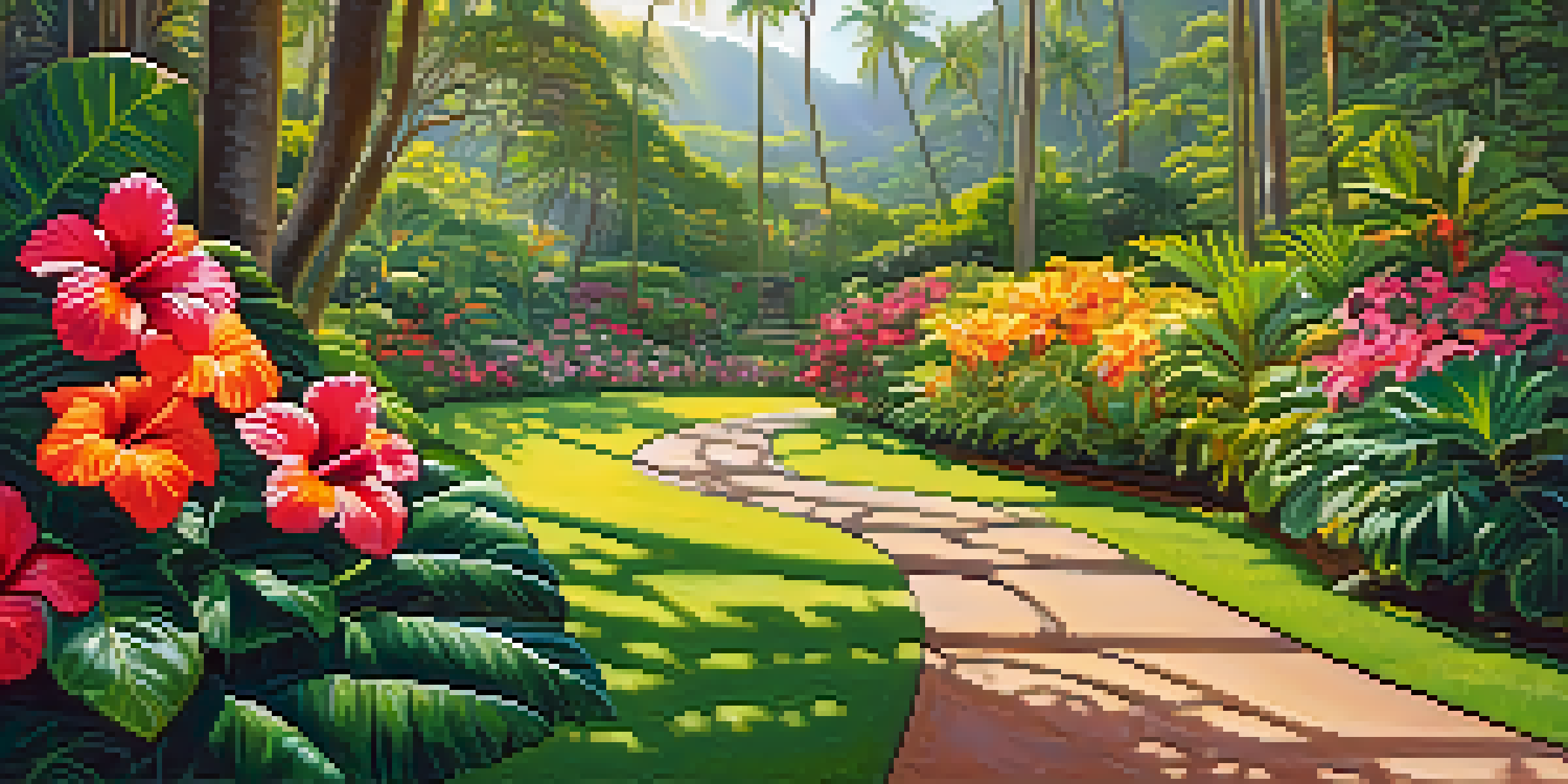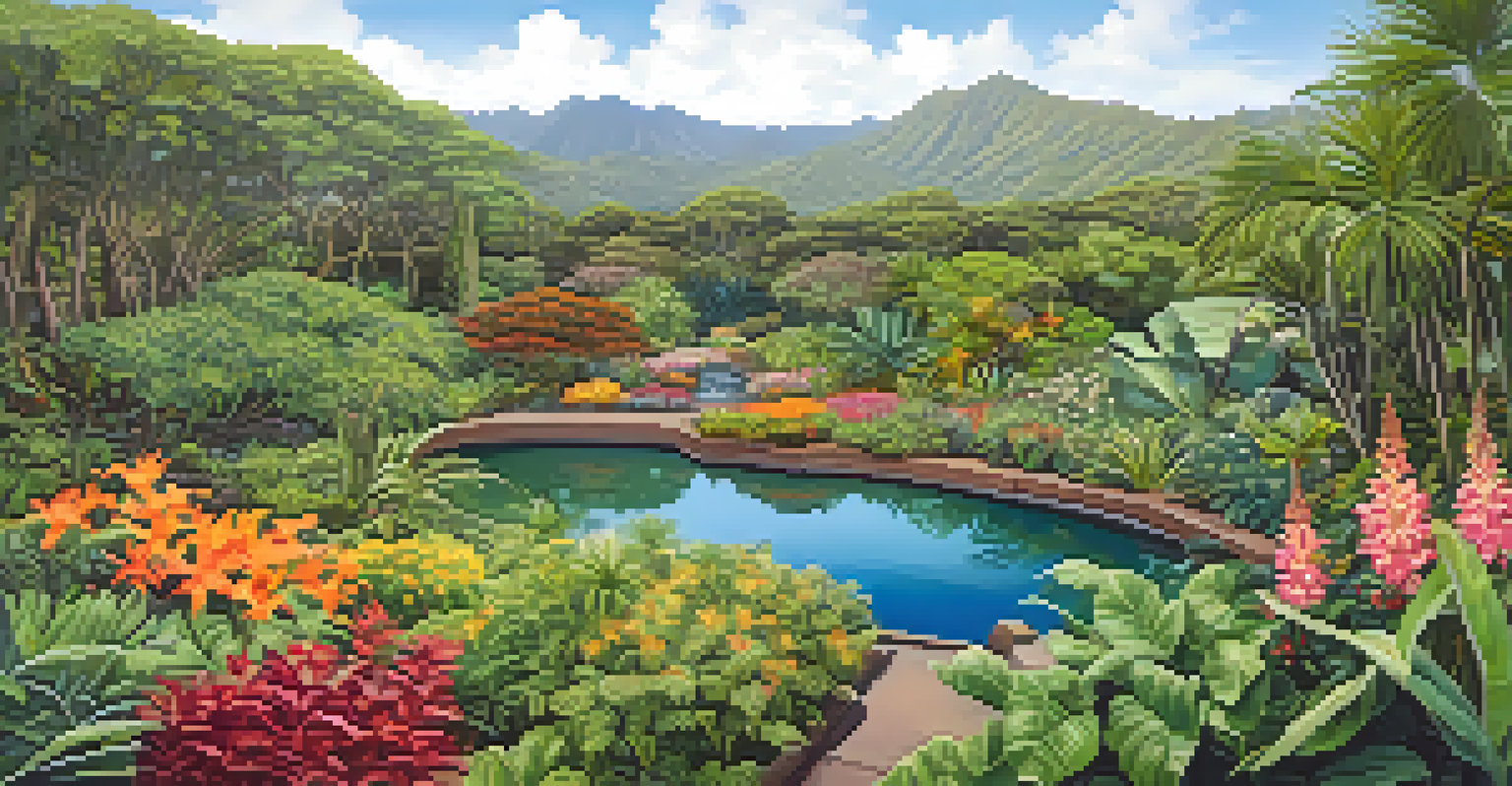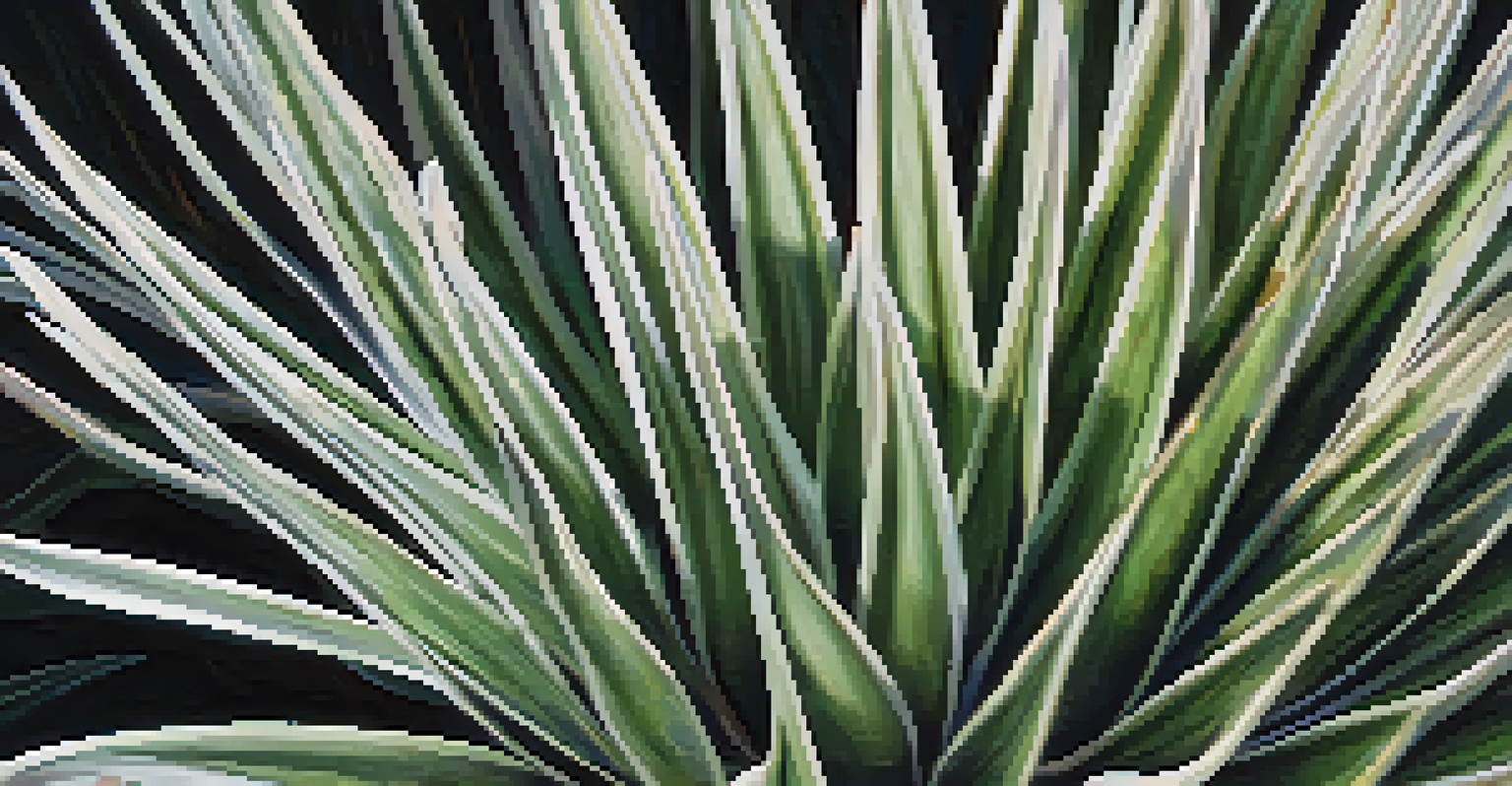Exploring the Unique Flora of Hawaiian Botanical Gardens

Introduction to Hawaiian Botanical Gardens
Hawaiian Botanical Gardens are more than just beautiful landscapes; they are living museums of plant diversity. Each garden tells a story of the islands' unique ecosystems and the flora that thrive in them. From the vibrant colors of tropical flowers to the towering trees, these gardens offer a glimpse into the natural beauty of Hawaii.
The creation of a thousand forests is in one acorn.
Visitors can explore various themed gardens, each showcasing different species and their ecological significance. These gardens play a crucial role in conservation efforts, protecting endangered native plants and educating the public about Hawaii's unique flora. It's like taking a stroll through a living gallery of nature's artwork.
In this article, we will delve into the unique flora found in Hawaiian Botanical Gardens, highlighting their importance and the fascinating stories behind them. Whether you're a seasoned botanist or a curious traveler, there's something in these gardens for everyone.
The Importance of Native Plants
Native plants are the backbone of Hawaii's ecosystems, supporting local wildlife and maintaining the islands' biodiversity. These plants have adapted over thousands of years to the specific conditions of their environments, making them crucial for ecological balance. By preserving native flora, we help safeguard the habitats of countless species that rely on them.

Sadly, many native plants in Hawaii face threats from invasive species and habitat loss. Botanical gardens serve as vital sanctuaries for these plants, providing a safe space for them to thrive and reproduce. Through propagation and education, these gardens are working to restore native plant populations and educate visitors about their importance.
Importance of Native Plants
Native plants are essential for maintaining Hawaii's ecosystems and biodiversity, serving as habitat for local wildlife.
For example, the Hawaiian silversword, a striking plant endemic to the islands, has been successfully cultivated in many botanical gardens. These efforts not only help to conserve this beautiful species but also inspire visitors to appreciate the rich natural heritage of Hawaii.
Exploring Tropical Flower Gardens
One of the highlights of Hawaiian Botanical Gardens is the breathtaking array of tropical flowers. From the iconic hibiscus to the fragrant plumeria, these flowers add vibrant color and beauty to the landscape. Each flower has its own story and significance, often linked to Hawaiian culture and traditions.
In every walk with nature, one receives far more than he seeks.
Walking through these floral displays can feel like stepping into a painter's palette, where every hue and shade tells a tale of the islands. Many gardens also feature guided tours that provide insights into the history and uses of these flowers, enriching the visitor experience. It's a delightful way to learn while taking in the stunning sights.
In addition to their beauty, many tropical flowers play essential roles in the ecosystem, attracting pollinators like bees and hummingbirds. By fostering these relationships, we can better understand the interconnectedness of nature, making our visits to the gardens not just visually enjoyable but also educational.
The Role of Botanical Gardens in Conservation
Hawaiian Botanical Gardens are at the forefront of conservation efforts for endangered plant species. With a high percentage of Hawaii's flora being endemic, the stakes are high, and these gardens provide a critical refuge for many plants on the brink of extinction. Their work goes beyond mere preservation; it encompasses research, education, and community involvement.
Many gardens collaborate with local organizations and researchers to propagate rare plants and restore natural habitats. This collective effort ensures that future generations can enjoy Hawaii's unique botanical heritage. By visiting these gardens, you are supporting these vital conservation initiatives.
Role of Gardens in Conservation
Hawaiian Botanical Gardens play a critical role in conserving endangered plant species through research and community involvement.
For instance, the Lyon Arboretum in Oahu is renowned for its successful propagation programs, which focus on Hawaii's rare and endangered plants. Such initiatives highlight the importance of botanical gardens not only as places of beauty but as essential players in the fight against biodiversity loss.
Educational Programs and Workshops
Hawaiian Botanical Gardens are not just for sightseeing; they also offer a wealth of educational opportunities. Many gardens host workshops, guided tours, and hands-on activities designed to engage visitors of all ages. These programs provide an excellent way to learn about plant care, ecology, and the importance of conservation.
For example, you might find a workshop on how to create your own native plant garden at home, helping you bring a piece of Hawaii's beauty into your own backyard. Additionally, educational programs often emphasize the cultural significance of various plants to the Hawaiian people, enriching your understanding of their heritage.
By participating in these educational initiatives, visitors can develop a deeper appreciation for the islands' flora and understand the vital role they play in the ecosystem. It's a chance to connect with nature and learn how to protect it.
The Impact of Invasive Species
Invasive species pose one of the biggest threats to Hawaii's unique ecosystems. These non-native plants and animals can outcompete local species for resources, leading to the decline of native flora. Hawaiian Botanical Gardens are crucial in addressing this issue by educating visitors about the dangers of invasive species and encouraging responsible gardening practices.
Many gardens have dedicated sections that illustrate the impact of these invaders, providing clear examples of how they disrupt local ecosystems. By raising awareness, these gardens foster a sense of responsibility among visitors, encouraging them to make informed choices when it comes to gardening and landscaping.
Educational Opportunities Abound
These gardens offer various educational programs and workshops, enhancing visitor understanding of plant care and conservation.
For instance, the Koko Crater Botanical Garden actively removes invasive species and replaces them with native plants, showcasing the beauty of what can be achieved through restoration efforts. This hands-on approach not only beautifies the gardens but also serves as a powerful reminder of the importance of protecting native ecosystems.
Planning Your Visit to Hawaiian Botanical Gardens
If you're planning a trip to experience the unique flora of Hawaiian Botanical Gardens, there are a few things to keep in mind. Each garden has its own hours, admission fees, and special events, so it’s wise to check their websites ahead of time. Many gardens offer guided tours, which can enhance your experience by providing expert insights into the plants and their significance.
Consider visiting during blooming seasons to witness the gardens at their most vibrant. Each season brings its own beauty, with different flowers and plants showcasing their splendor throughout the year. Additionally, many gardens host seasonal events, such as plant sales or educational workshops, providing extra opportunities for engagement.

Don't forget to bring your camera! The stunning landscapes and unique plant life make for perfect photo opportunities. Whether you're a nature lover or simply looking for a peaceful retreat, Hawaiian Botanical Gardens offer an unforgettable experience.